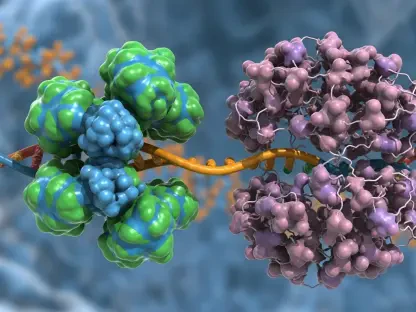The False Choice Clouding Enterprise AI
Talk to ten AI vendors and you’ll hear eleven prescriptions. One camp evangelizes retrieval-augmented generation (RAG) as the only way to ground a model in enterprise data; another swears by fine-tuning for domain expertise; and others add agents into the mix.
The debate isn’t just technical, it’s practical. How do you deliver accurate, explainable answers without creating a maintenance nightmare?
RAG, fine‑tuning, and agentic orchestration are tools, not religions. Each solves a different problem. RAG adds up‑to‑date information at inference; fine‑tuning teaches the model new patterns; agents coordinate multi‑step workflows. Understanding when to use each approach – and when to combine them – is the key to building AI systems that business leaders will trust.
RAG: Grounding Models In Real Data
At its core, retrieval‑augmented generation connects a large language model to external knowledge. An embedding model turns documents into vectors; a retriever finds relevant chunks; a reranker improves relevance; and the language model composes an answer. The result is a model that can cite proprietary or recent information rather than hallucinating. Budibase reports that RAG improves accuracy and relevance, is cost‑effective, and can be applied across industries without retraining.
RAG is ideal when your main challenge is access to current information. Chatbots for HR policies, knowledge‑base assistants, internal workflow bots, and document‑centric queries all benefit from a retrieval layer. Because the base model is untouched, new documents can be ingested without retraining. The trade‑off is that RAG demands careful curation. Noisy or misaligned documents hamper retrieval. A vector store that contains everything soon becomes a liability rather than a single source of truth. RAG cannot teach the model new reasoning patterns; it augments knowledge, it doesn’t add skills.
Fine‑tuning: Adding Domain Expertise
Fine‑tuning takes a different path. It starts with a pre‑trained model and adjusts the weights using domain‑specific examples. In doing so, the model internalizes specialist vocabulary, tone, and logic. Fine‑tuned models excel in areas like finance, legal, or technical support where nuanced language matters.They respond quickly because they don’t depend on external retrieval, handle fringe cases effectively, and can run on smaller architectures that reduce inference costs.
However, fine‑tuning introduces its own risks. Overfitting and catastrophic forgetting are common: a fine‑tuned model may perform well on training tasks but falter on novel prompts. And because the model’s knowledge is baked in, updating it requires another training round. Fine‑tuning is best reserved for tasks where domain knowledge is stable and the payoff outweighs the upkeep.
Agents: Orchestrating Complex Workflows
The latest wave of innovation is agentic AI. IBM defines an agent as an AI system that plans and executes actions. Agents have memory to remember past interactions, planning to decompose complex tasks, and function‑calling to invoke external tools. In a RAG context, an agent might decide which knowledge base to query, break a question into sub‑queries, call a calculator or summarizer, and iterate until it has a satisfactory answer.
Agentic RAG adds flexibility by allowing the system to pull data from multiple sources and refine its own results. Yet there are costs. Additional agents mean more API calls, more tokens, and more latency. Use agents only when single-pass retrieval or fine-tuning cannot handle the task’s complexity.
Choosing And Combining Techniques
Use RAG when you need access to current or proprietary information and can curate a quality document set. It’s the right choice for enterprise chatbots, customer support assistants, and document search. Use fine‑tuning when your product requires deep domain knowledge, low latency, or consistent tone, and you have stable, high‑quality training data. This applies to specialized assistants such as assistants in law, finance, or engineering. Use agents when the problem requires multi‑step reasoning, combining several data sources or calling external tools, such as generating a report that summarizes support tickets and computes metrics.
Often, the best solution is a combination. A fine‑tuned model can handle general dialogue, while a RAG component supplies up‑to‑date facts. An agent can orchestrate both, deciding when to call the retriever and when to rely on the fine‑tuned model. Conversely, sometimes simplicity wins. A straightforward RAG chatbot may satisfy the need without adding agents or custom training.
A Layered Architecture For Trust
A trustworthy AI system isn’t a monolith; it’s a set of layers. Source systems—such as policy documents, tickets, and CRM data—feed into a data lake where documents are ingested and vectorized. Transformation pipelines prepare the data. Above this sits a semantic layer that defines entities and metrics and exposes them through APIs. A metric service standardizes definitions, so every tool uses the same vocabulary. At runtime, the retrieval layer fetches relevant information. A planning layer (an agent) decides whether to retrieve, compute, or delegate to a fine‑tuned model. Finally, a monitoring layer tracks latency, accuracy, and cost.
This architecture echoes the idea of a federated semantic layer. Domains own their data but adhere to global definitions. Policies and access controls are enforced at the semantic layer, not hidden in application code. Agents operate within these guardrails; they do not replace governance.
What Not To Do
There are common pitfalls to avoid:
Everything is a vector – dumping all documents into a vector store without curation leads to irrelevant retrieval. Start small and expand the corpus as you test.
Fine‑tune for every task – resist the temptation to build a bespoke model for each problem. In many cases, RAG or prompt engineering is sufficient.
Agentic overkill – adding planning agents to simple question‑answering systems increases cost and latency without improving results.
Ignoring governance – embed access controls and audit trails into the semantic layer. Without them, agents may call tools they shouldn’t or expose sensitive data.
No feedback loop – continuously evaluate retrieval quality, model accuracy, and agent performance. Human oversight remains essential, just as it does in traditional BI.
Measuring Value
Ultimately, technology choices must be justified through business metrics. Track how long it takes to resolve support queries, how accurate the responses are, how often users consult the AI assistant, and how much each call costs. Compare maintenance costs: adding documents to a RAG system vs. retraining a model vs. orchestrating agents. Link improvements to tangible outcomes like faster month‑end reporting, reduced training time for new employees, or lower call center volumes.
Building AI Your Business Can Trust
The purpose of enterprise AI is not to deploy the flashiest architecture; it is to accelerate decision‑making. RAG grounds answers in current data so that they are explainable. Fine‑tuning infuses models with deep expertise. Agents enable multi‑step reasoning. Each has a role; none is a silver bullet. Thoughtful combinations, anchored by a semantic layer and guided by governance, will yield systems that leaders can trust.
When you pick the simplest approach that meets your needs, educate stakeholders on why you chose it, and monitor its performance, you move beyond the false binary of RAG vs fine‑tuning. Agents become a tool you use intentionally, not an end in themselves. That’s how you build AI that speaks your organization’s language–and earns its trust.









